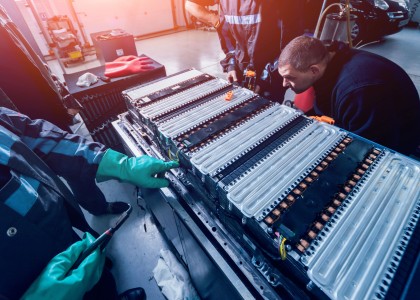AMMEX organizations include the basic materials manufacturing sector [aluminum, chemicals, forest products, glass, metal casting, steel] in the US economy along with several stakeholders in materials manufacturing, such as the Northeast Midwest Institute, the National Association of State Energy Officials and the American Council for an Energy-Efficient Economy. This report addresses the justification for federal and industrial funding of research under the Department of Energy's Industrial Technologies Program.
Facts About the Industrial Technologies Program [ITP]
When industry reps meet with Congress and the Office of Management and Budget about ITP, we're often asked "why shouldn't industry fund this research on its own?" The answer clearly is the programs undertaken under ITP have a substantial public benefit, which justifies the federal participation; and the industry benefit justifies industrial investment.
The Industrial Technologies Program [ITP] at DOE is meeting its government-established goals [reduced dependence on foreign oil, reduced environmental impact, job growth and retention by advancing industrial competitiveness]. It is an investment shared jointly by government and industry and its benefits accrue to both. Advances developed under ITP in all three of the areas above are penetrating deeply into the US economy, as previous papers have shown.
DOE and Energy-Efficiency
The United States has a Department of Energy in part to develop technologies that are energy-efficient. This is evident through such programs as FreedomCar, ITP, Clean Coal and the various Hydrogen Initiatives and makes the point energy-efficiency is clearly in the public interest and important public policy. This is also clear in the specific ITP goals above—all of which benefit the public at large. It stands to reason then, the development of energy-efficient technology, by definition, is appropriate for investment of federal funds.
Where do the funds go?
Another common misperception is DOE funds are distributed to industry. DOE and industry funds are blended and used to fund R & D at a variety of institutions as shown in Table 1, which recaps funding for ITP projects in steel, aluminum and forest products from 1995-2005:
| Item | University | Nat'l Lab | Tech Developer | Industry | Total |
| $M | 49.8 | 40.77 | 35.92 | 29.19 | 150.6 |
| % of Total | 33 | 27 | 23.8 | 19.3 | 100 |
Over 80% of R&D funding is spent at universities, national laboratories and technology developers [which are technology providers outside of an industrial sector]. It should be pointed out that where an industrial company received funding for work, it is because it was the best choice for the work [based on facilities or expertise]. For example, on a particular steel industry project, Inland Steel was paid out of project funds [i.e., industry and DOE money] to perform characterization of certain test materials because the particular equipment in their laboratory was well-suited to the tests. They were paid like any other subcontractor.
It should be further noted industry cost-share levels [up to 50%] on all ITP research projects, far exceeds the cost of any tasks contracted for with industrial partners [19.3%].
In summary, the Industrial Technology Program selects projects that have both public and private benefits, justifying the investment of both DOE and industry, and it conducts research at the most qualified facilities in North America with over 80% of funding supporting tasks at universities, national labs and technology developers, many of which are small businesses. The ITP Program is a unique and successful program which should be expanded so that its public and private benefits can reach even further into our economy.


